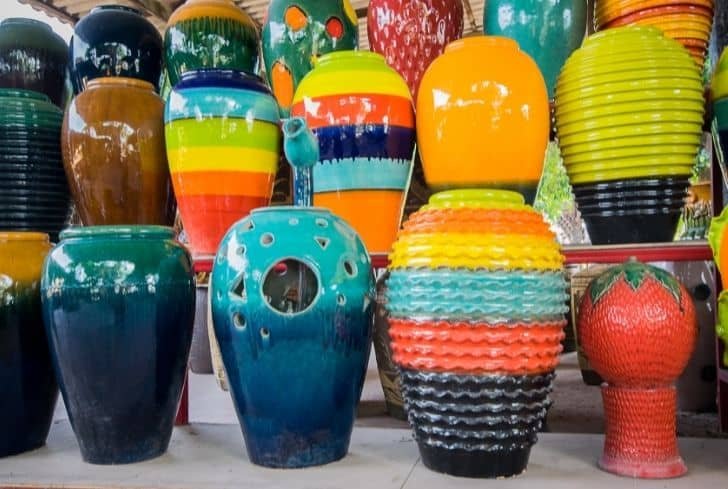Can You Recycle Ceramic
You may not know this, but you can recycle ceramic. That’s right, those old plates and cups that you don’t use anymore can be recycled and turned into new products. Ceramic is a durable material that can be recycled over and over again without losing its quality.
So next time you’re about to throw away that old mug, think twice!
- Ceramic can be recycled by crushing it into a powder and then using it as an aggregate in concrete or asphalt
- Alternatively, ceramic can be melted down and reformed into new products
- Recycling ceramic reduces the need for mining and quarrying activities, which can have a negative impact on the environment
- It also helps to conserve energy and resources, as well as reducing greenhouse gas emissions
Mates with Waste- Can you recycle ceramics?
Is Ceramic Considered Recycling?
Ceramic is not considered recycling because it cannot be melted down and reformed into new products. Ceramic is made from natural materials (clay, sand, etc.) that are shaped and then fired in a kiln. Once fired, the ceramic shape is permanent and can only be reused as-is or broken up and used as filler or aggregate in other projects.
What Can You Do With Broken Ceramics?
If you have a piece of ceramic that is broken, there are several things that you can do with it. One option is to simply throw it away. However, there are actually quite a few uses for broken ceramics.
One use for broken ceramics is to create mosaic art. To do this, you will need to gather up all of the pieces of your ceramic and then glue them together onto a backing board. Once the glue has dried, you can then grout the gaps between the pieces and enjoy your new mosaic artwork!
Another option for broken ceramics is to use them as plant pots. This is a great way to recycle your old ceramics and give your plants a unique home. Simply glue or tape the pieces of ceramic together (making sure that there are drainage holes at the bottom) and then fill with soil and plants!
Finally, you could also use broken ceramics as part of a DIY project. For example, you could make coasters out of them by gluing them onto tiles or even using them as tiles themselves in a backsplash design. There are endless possibilities when it comes to crafting with broken ceramics – get creative and see what you can come up with!
Are Ceramics Hard to Recycle?
Ceramics are made from natural materials like clay and minerals, which makes them recyclable. However, they are not always easy to recycle because they require special processing. For example, ceramics can be recycled into new products like tiles or bricks, but this process is energy-intensive and can release harmful pollutants.
So, while ceramics are technically recyclable, it might not always be the best option for the environment.
Does Ceramic Biodegrade?
Ceramic is a material that is created by firing clay and other materials at high temperatures. It is non-toxic and can withstand high temperatures, making it ideal for cookware, dinnerware, and bathroom fixtures. Ceramic is also used in building construction, electronics, and engineering applications.
While ceramic does not biodegrade in the traditional sense of the word, it can be recycled or reused indefinitely. In a landfill environment, ceramic will not decompose like organic materials such as food waste or paper products. However, if ceramic items are broken into small pieces, they may eventually become part of the soil composition.
If you are looking to dispose of old ceramic items, your best bet is to recycle them or donate them to a thrift store or ceramics studio.
.jpg)
Credit: recyclenation.com
Can You Recycle Ceramic Mugs
We all know that recycling is important, but did you know that ceramic mugs can be recycled too? That’s right – those coffee mugs and tea cups can be given new life instead of being thrown away. Here’s everything you need to know about recycling ceramic mugs.
Ceramic mugs are made from a variety of materials, including clay, sand, and minerals. Once these materials are combined and formed into the shape of a mug, they are fired in a kiln at high temperatures. This process gives the mug its finished look and makes it durable enough to use on a daily basis.
While most ceramic mugs can be recycled, there are some exceptions. Mugs that have been painted or glazed with lead-based paint cannot be recycled due to the health hazards posed by lead exposure. Similarly, any mug that has been damaged or cracked should not be recycled as it could pose a safety hazard to workers handling the recycling process.
To recycle your ceramic mug, simply wash it clean and bring it to your local recycling center. There, it will be sorted and sent off to be melted down and reformed into new products like construction tiles or even more ceramic mugs! So next time you finish your morning cup of coffee, don’t forget that your mug can have a second life – just recycle it!
Conclusion
Ceramic items are generally made from clay and other natural materials. They can be recycled, but it’s important to know how to properly recycle them.
Ceramic items can be recycled by breaking them down into their component parts.
The clay can be used to make new ceramic products, while the other materials can be reused or recycled as well. It’s important to recycle ceramic items properly so that they don’t end up in landfills.




